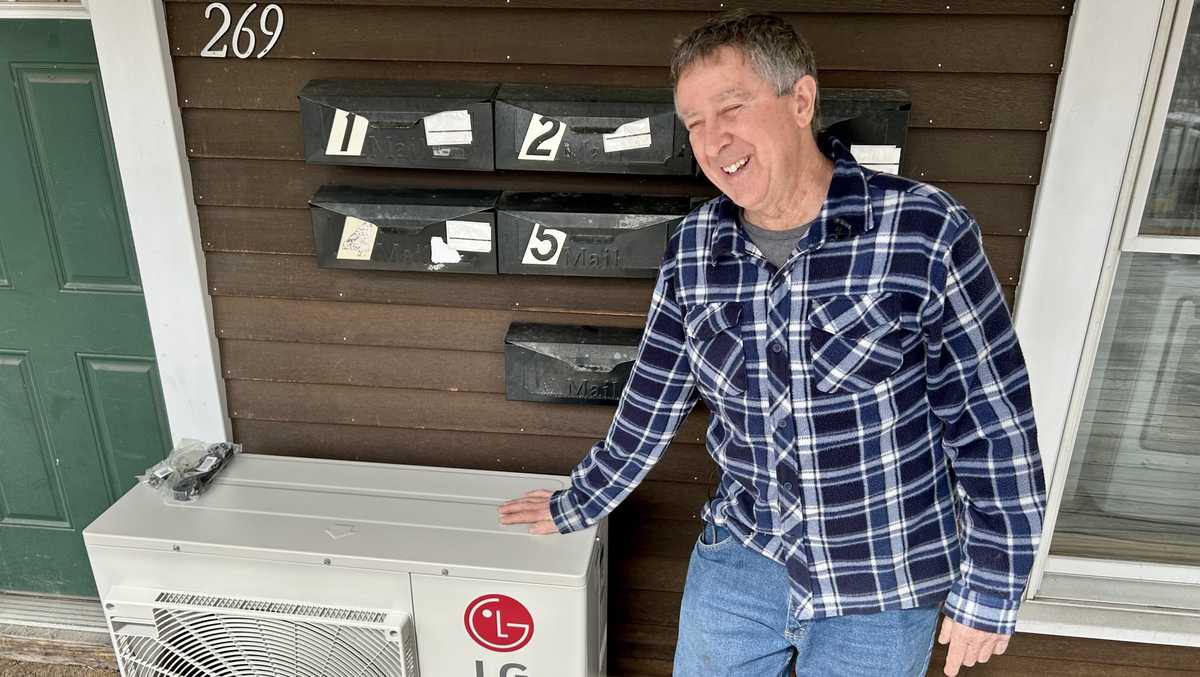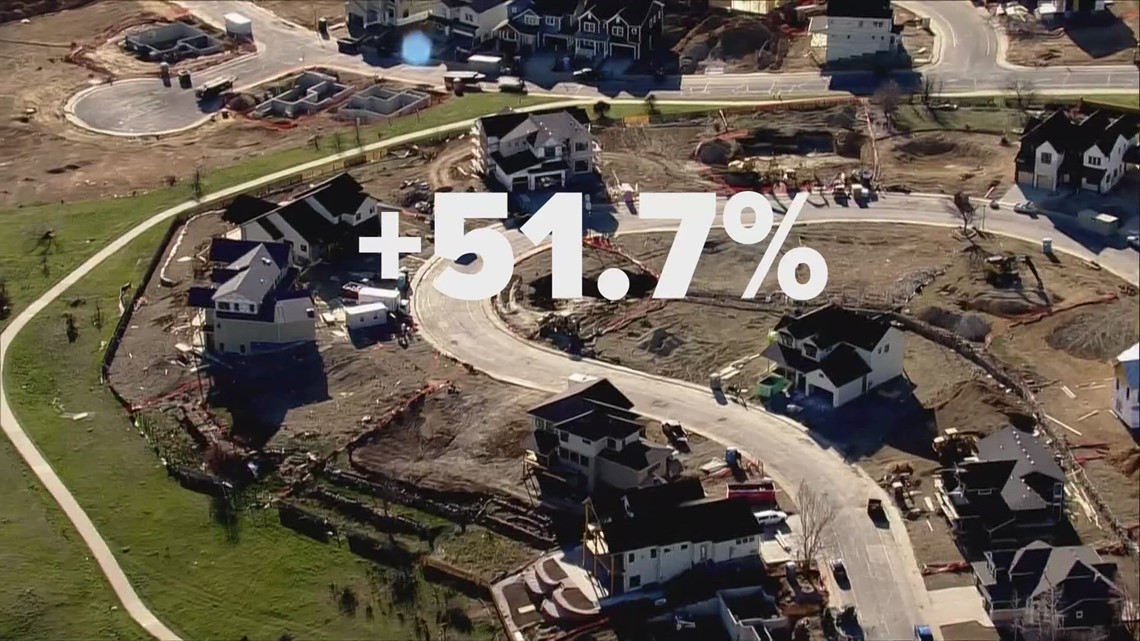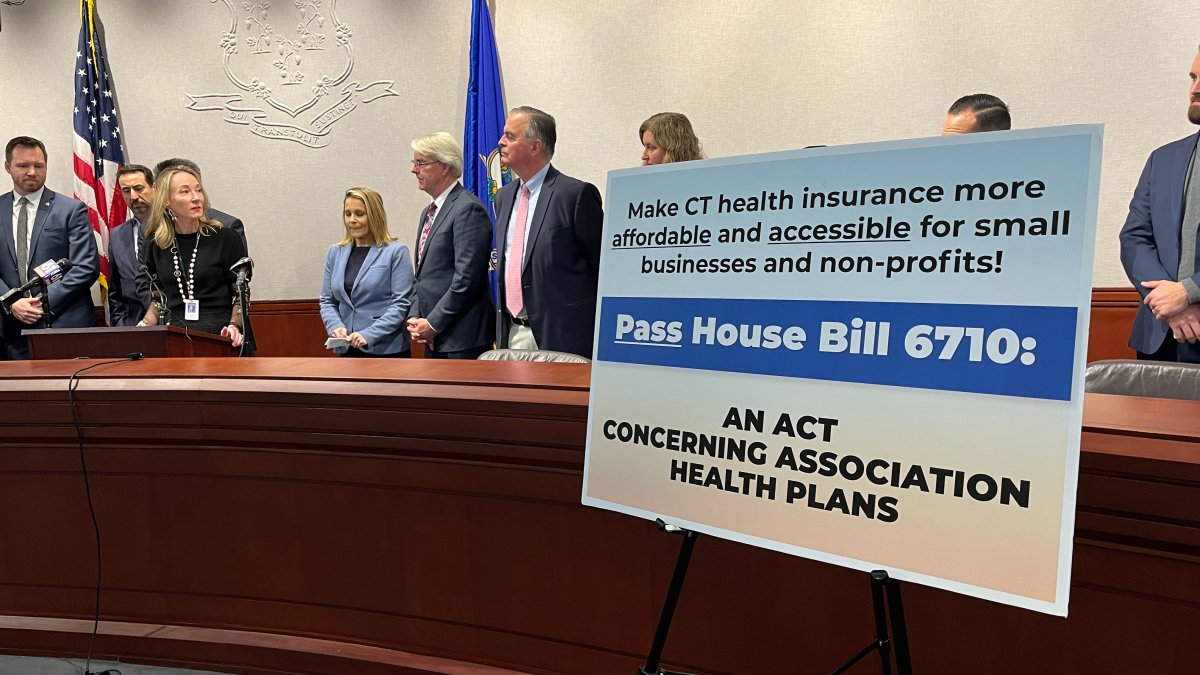Colorado’s wildfire risk is so high some homeowners can’t get insured. The state may create last-resort coverage.

State lawmakers are preparing to introduce a bill in the legislature that would create a quasi-governmental program offering basic home insurance to the growing number of Colorado homeowners who say they can’t get coverage from private companies because the risk of wildfire is growing.
The Colorado Division of Insurance has fielded dozens of calls and emails, many of them since August, from Coloradans who say they have been turned down by private home insurers. The situation presents the specter of financial calamity for people whose homes are their primary asset and for communities that lean on real estate as an economic engine.
Without home insurance, it’s impossible to secure a mortgage, which dramatically limits who can buy or sell a home. There’s also immense financial risk in owning a property without insurance coverage.
The problem is especially acute in high country communities, but Coloradans who live on the Front Range, particularly those near where the Marshall fire destroyed more than 1,000 homes in December 2021, are also reporting problems securing coverage for their properties.
The Marshall fire: One year later
It has been one year since the Marshall fire destroyed hundreds of houses and businesses in parts of Louisville, Superior and Boulder County. One year of sorting through what was lost. One year of trying to create a new normal. And one year of making a new home.
Read our series revisiting the Marshall fire one year later. >> SERIES
“We can see the handwriting on the wall that we’re starting to have a problem,” said state Rep. Judy Amabile, a Boulder Democrat who is taking the lead on the prospective legislation, which is expected to be introduced at the Capitol after the legislature reconvenes next month for its 2023 lawmaking term.
Colorado one of a few states that do not have a so-called home insurer of last resort, or “fair plan,” created by the government. Michael Conway, Colorado’s insurance commissioner, said that’s because Colorado hasn’t needed one — until now.
Colorado’s three largest wildfires by acreage all happened in 2020. And before that the 2012 Waldo Canyon fire and 2013 Black Forest fire, both in El Paso County, each destroyed hundreds of homes. Then came the Marshall fire, Colorado’s most destructive in terms of the number of homes destroyed. More than $2 billion in insurance claims are expected to be filed in connection with the Marshall fire.
“We just haven’t had natural disasters of the magnitude of states like the Gulf Coast states in particular,” Conway told The Colorado Sun. “It was probably a year and a half ago that I was in front of one of the insurance committees at the state legislature and they asked if we had (homeowners’ insurance) availability problems in the state that I was worried about, and I honestly could say at that point that no we didn’t. We didn’t have issues.”
But late in the summer his office started to hear complaints from homeowners that they couldn’t get their properties insured. What really sounded the alarm was when independent insurance agents started telling state regulators they couldn’t find coverage for their clients. If they can find coverage, it can sometimes be outrageously expensive.

Jim Kinser, an insurance broker in Steamboat Springs, told The Sun about a single-family home in Routt County that was previously insured for an annual premium between $3,000 to $4,000. When a new owner bought the property over the summer and planned to remodel the house, no insurance company would write them a homeowner’s policy until the house was renovated with fire-resistant materials and brush cleared from its perimeter. The home was uninsured for months in the meantime.
In Pitkin County, home to Aspen, Kniser said a homeowner’s coverage was not renewed by their insurance company and no other carrier would provide coverage at any price.
“It’s getting to be more and more difficult to find carriers who will say ‘yes, we’ll take it,’” Kinser said. “And people need insurance.”
State Sen.-elect Dylan Roberts, an Avon Democrat, said difficulty obtaining property insurance is “the No. 1 thing I’m hearing from my constituents.” In the high country, where there’s already a housing crisis, there are fears that homeowners insurance problems and rising costs could further limit the lack of affordable places to live.
Conway says the legislature must act fast to prevent Coloradans from having to go without coverage.
“If the issues that we’re seeing now aren’t remedied by the private insurance market fairly expeditiously, we are going to have to set something up pretty quickly,” he said.

The Unaffiliated is our twice-weekly newsletter on Colorado politics and policy.
Each edition is filled with exclusive news, analysis and other behind-the-scenes information you won’t find anywhere else. Subscribe today to see what all the buzz is about.
But the private insurance industry is urging caution, saying that if Colorado acts too fast and makes mistakes, insurance companies may pull out of the state altogether.
“The stakes are very high,” said Carole Walker, executive director of the Rocky Mountain Insurance Information Association, an industry trade group. “It just feels like we’re rushing to the solution without adequately studying it. If there is going to be a fair plan or last-resort legislation this year, let’s make sure we’re basing it on really being a very targeted solution at a targeted problem.”
Walker said that anecdotes alone shouldn’t drive the legislature. “We certainly have to understand what our gaps are and what our problems are,” she said.
And given the high stakes, the debate over a state-run or state-created property insurance program could be one of the most technically complicated and politically heated policy battles at the Colorado Capitol in 2023.
How it works in other states
State-run or state-created insurers of last resort started cropping up in the 1960s in coastal and urban areas where property owners faced high risks — from riots, fires and hurricanes — and couldn’t get traditional coverage from private insurance companies, said Mark Friedlander, a spokesman for the Insurance Information Institute, another insurance industry trade group.
There are such programs in 32 states and the District of Columbia. While each operates differently, they generally fall into two groups: plans subsidized by taxpayers and plans funded by private insurers.
The plans are often costlier and offer less coverage than the average private insurance policy, Friedlander said. “They typically do not include liability coverage, which is a component of a standard home insurance policy,” he said.
The purpose of the plans is simply to ensure that people can get some level of coverage — hence the “insurer of last resort” moniker.
Florida’s Citizens Property Insurance Corporation is the biggest state-managed property insurance program in the U.S. In August, the nonprofit funded by policyholders surpassed 1 million policies and became the largest property insurer in the state. Nearly 28 million people live in Florida.
Homeowners are only eligible for coverage from the Citizens Property Insurance Corporation if they cannot get coverage from a Florida-authorized insurance company or if the premiums from a Florida-authorized insurance company are more than 20{a652ac39cb023ff8fd1cc85f4393f5b1bb70bf2f880b7bee35f712e4bd8633f7} higher than the premiums for comparable coverage from Citizens.

In California, homeowners can only get insurance under the state’s “FAIR Plan” if they can’t get coverage from a private company after a “diligent search.” And homeowners must repeat that search annually. The policies offered under California’s plan are handled by private insurers who operate in the state, who are required to cover a proportion of FAIR Plan policies equal to their share of normal policies in California.
“For most homeowners, the FAIR Plan is a temporary safety net — here to support them until coverage offered by a traditional carrier becomes available,” the FAIR Plan website says. As of 2020, less than 3{a652ac39cb023ff8fd1cc85f4393f5b1bb70bf2f880b7bee35f712e4bd8633f7} of California residents were covered under the plan.
The private insurance industry often points to the Citizens Property Insurance Corporation as an example of a state-run property insurance program gone wrong because of how many people left the private market to seek coverage from Citizens. Insurance companies use customer premiums to create a pool of money from which they can pay out claims. Fewer customers means a smaller pool.
Florida’s legislature met for a special lawmaking term in December to tweak the program and set aside billions for initiatives aimed at bolstering the private insurance market.
“Google Florida and their plan and it will be what not to do,” Walker said.
Conway said he is starting from the premise that a state-run or created property insurance program in Colorado should not compete with the private insurance market.
“I think it’s kind of a misnomer to call (these programs) an insurer of last resort,” he said. “It puts the idea in people’s head that it’s going to actually be in a true insurance company. And they’re really not. They’re really kind of a safety net for people that are organized by their state governments in order to help them in the situation where they can’t find homeowners insurance coverage.”
That may be cold comfort for Coloradans who are paying exorbitant costs for property insurance.
Jim Noon is the former treasurer of the Buffalo Ridge-Buffalo Village condominium complex homeowners association in Summit County. He thought a tree clearing near the 270-unit complex — called a fire break — that stopped a wildfire in 2018 would prevent the complex’s insurance rates from climbing too high. Earlier this year, the HOA accepted a $200,000 property insurance bid and paid the amount.
“Then, three days into the coverage, they just said nevermind and handed us the check back,” Noon said.

He said the insurance agent hadn’t looked to see if the complex was in an area at risk for wildfire before agreeing to provide coverage.
Scrambling to find a new insurer, the HOA found a carrier that offered insurance for about $1 million. It covered only half of the total value of the complex if it burned to the ground, Noon said, and the policy didn’t cover wind or water damage.
Others are struggling to get the insurance they feel is adequate for their home.
Tim Anderson, who lives in Steamboat Springs, spent nearly $1 million to build his 3,000-square-foot house in 2016, complete with custom brickwork and cabinets, and a sauna. One insurance agent argued it would cost $349,000 to rebuild his home, while another said it would cost $500,000.

“How is that possible? When I built this house five years ago, it cost me roughly $900,000, a million dollars. It’s not possible the house can be rebuilt with $350,000. That’s just laughable,” Anderson said.
Eventually, Anderson — who has worked as an insurance underwriter for 40 years — found a local agent who understood local building costs and insured his home at $1.8 million.
“You can find the insurance,” he said. “The problem is getting insurance to the proper value.”
“We haven’t settled on anything yet”
Views on whether Colorado needs a government property insurance program have shifted rapidly.
Gov. Jared Polis, during a debate hosted by The Sun and CBS4 in October, said he wasn’t sold on a state-run or created homeowners’ insurance program being a good idea for Colorado. His main priority, he said, is to reduce the risk of wildfires.
“There’s proven technologies to do that, whether it’s simply taking down trees and brush around your home, construction materials, especially in the wildland-urban interface near open areas,” he said. “And if we do that successfully, we will be able to drive down insurance rates for every Coloradan.”
Now, Conway — a member of Polis’ cabinet — has made the governor’s administration intimately involved in the discussions over how to create an insurer of last resort in Colorado.
There are signs Republicans in the legislature, who are traditionally opposed to government growth, won’t necessarily fight the proposal.
“I do think it is an appropriate role for government to have some kind of a backstop,” said state Sen.-elect Mark Baisley, a Woodland Park Republican who represents an area west of Colorado Springs that’s prone to wildfires. “While I hate for the government to get any more involved than necessary in private industry, I think we do need to work pretty aggressively with insurance companies to get them to provide the coverage that people need.”
Baisley is separately working with Amabile on underinsurance issues in Colorado.
The conversations around how Colorado’s state-run or state-created property insurance program would be formed are still in a relatively early stage.
“There’s a lot of different ways to do it and we haven’t settled on anything yet,” Amabile said. “These policies are not going to be deluxe policies. It’s going to be very bare bones. It’s going to be limited coverage and it’s going to be expensive.”

She said Colorado lawmakers will look to other states as they draft Colorado’s plan. “There’s good and bad parts to what they’ve done,” Amabile said, pointing to Florida and California.
There has been talk of requiring homeowners to mitigate wildfire risk around their property as a prerequisite to getting insured under the state program.
Conway said his office has already been having conversations with experts around the country.
“It’s been decades since anybody has stood up a fair plan,” he said, “so finding people who actually have useful knowledge has been a little bit difficult.”
Generally speaking, he said, startup costs have been funded by assessments — or fees — on private insurance companies. Conway said the assessments have been relatively small.
Walker, with the Rocky Mountain Insurance Information Association, warned that any added costs for private insurers would likely be passed onto consumers. That means higher prices for people whose homes aren’t necessarily facing wildfire risk.

“If you pay for this through reassessments or surcharges, those are all costs that are passed on,” she said.
Walker urged Colorado lawmakers to have caps on how much coverage the state property insurance plan would offer to make sure the program is financially sound. New Mexico, for instance, only covers residential properties for up to $250,000 and up to $1 million for commercial properties.
“We want to address problems that we have and not create problems that we don’t have,” she said.
The Colorado legislature convenes for its 2023 lawmaking term Jan. 9.





:quality(70)/d1hfln2sfez66z.cloudfront.net/02-02-2023/t_832fc9813d3741189856dfd7da126358_name_Car_Insurance_Increase_transfer_frame_627.jpeg)
